
Biopharmaceutical company Bristol Myers Squibb (NYSE:BMY) reported revenue ahead of Wall Streets expectations in Q3 CY2025, with sales up 2.8% year on year to $12.22 billion. The company’s full-year revenue guidance of $47.75 billion at the midpoint came in 0.9% above analysts’ estimates. Its non-GAAP profit of $1.63 per share was 7.6% above analysts’ consensus estimates.
Is now the time to buy Bristol-Myers Squibb? Find out by accessing our full research report, it’s free for active Edge members.
Bristol-Myers Squibb (BMY) Q3 CY2025 Highlights:
- Revenue: $12.22 billion vs analyst estimates of $11.82 billion (2.8% year-on-year growth, 3.4% beat)
- Adjusted EPS: $1.63 vs analyst estimates of $1.52 (7.6% beat)
- The company lifted its revenue guidance for the full year to $47.75 billion at the midpoint from $47 billion, a 1.6% increase
- Management reiterated its full-year Adjusted EPS guidance of $6.50 at the midpoint
- Operating Margin: 25.5%, up from 16.1% in the same quarter last year
- Market Capitalization: $86.71 billion
Company Overview
With roots dating back to 1887 and a transformative merger in 1989 that gave the company its current name, Bristol-Myers Squibb (NYSE:BMY) discovers, develops, and markets prescription medications for serious diseases including cancer, blood disorders, immunological conditions, and cardiovascular diseases.
Revenue Growth
A company’s long-term sales performance can indicate its overall quality. Any business can have short-term success, but a top-tier one grows for years. Over the last five years, Bristol-Myers Squibb grew its sales at a mediocre 4% compounded annual growth rate. This was below our standard for the healthcare sector and is a tough starting point for our analysis.
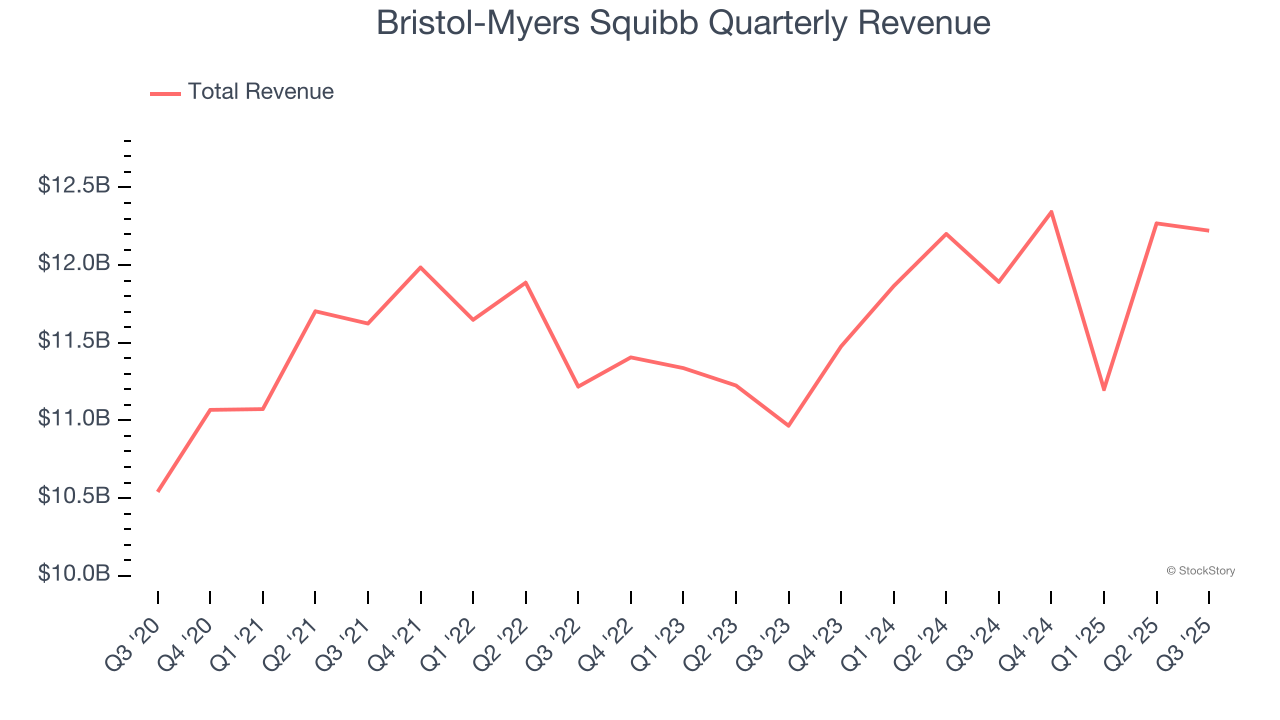
We at StockStory place the most emphasis on long-term growth, but within healthcare, a half-decade historical view may miss recent innovations or disruptive industry trends. Bristol-Myers Squibb’s annualized revenue growth of 3.4% over the last two years aligns with its five-year trend, suggesting its demand was consistently weak. 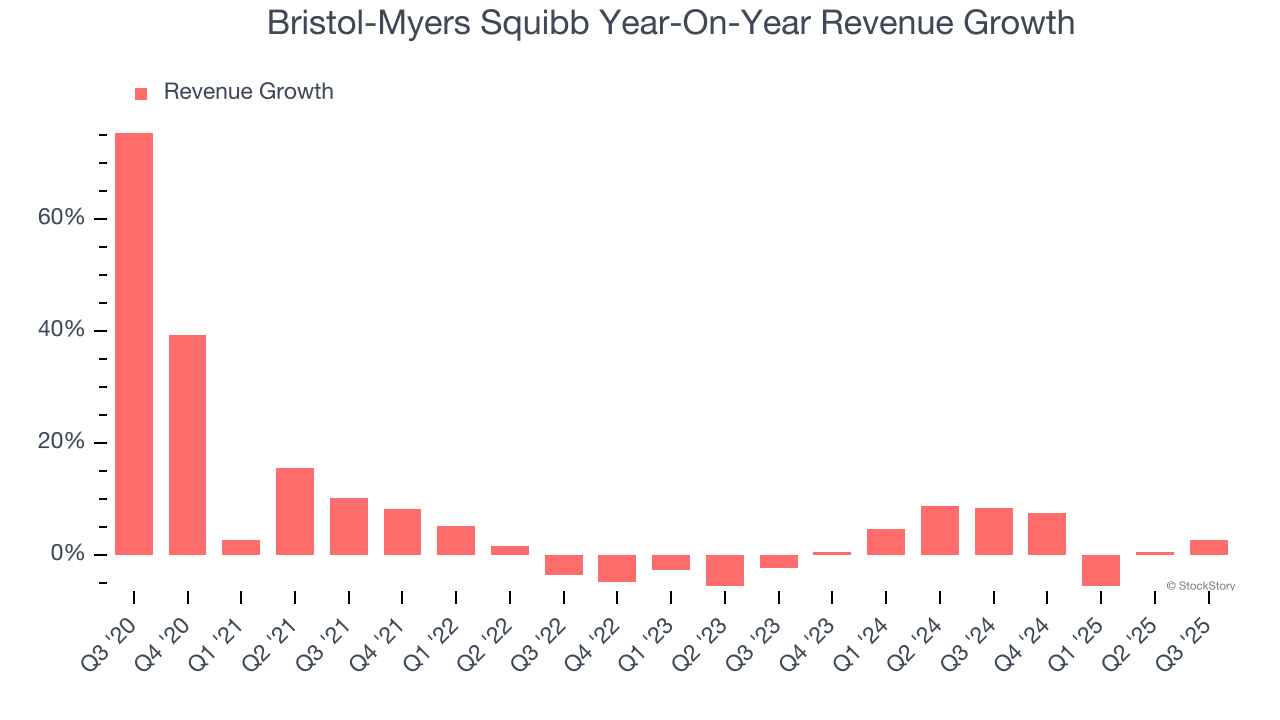
We can better understand the company’s revenue dynamics by analyzing its most important segment, Growth Portfolio. Over the last two years, Bristol-Myers Squibb’s Growth Portfolio revenue averaged 17.1% year-on-year growth. This segment has outperformed its total sales during the same period, lifting the company’s performance. 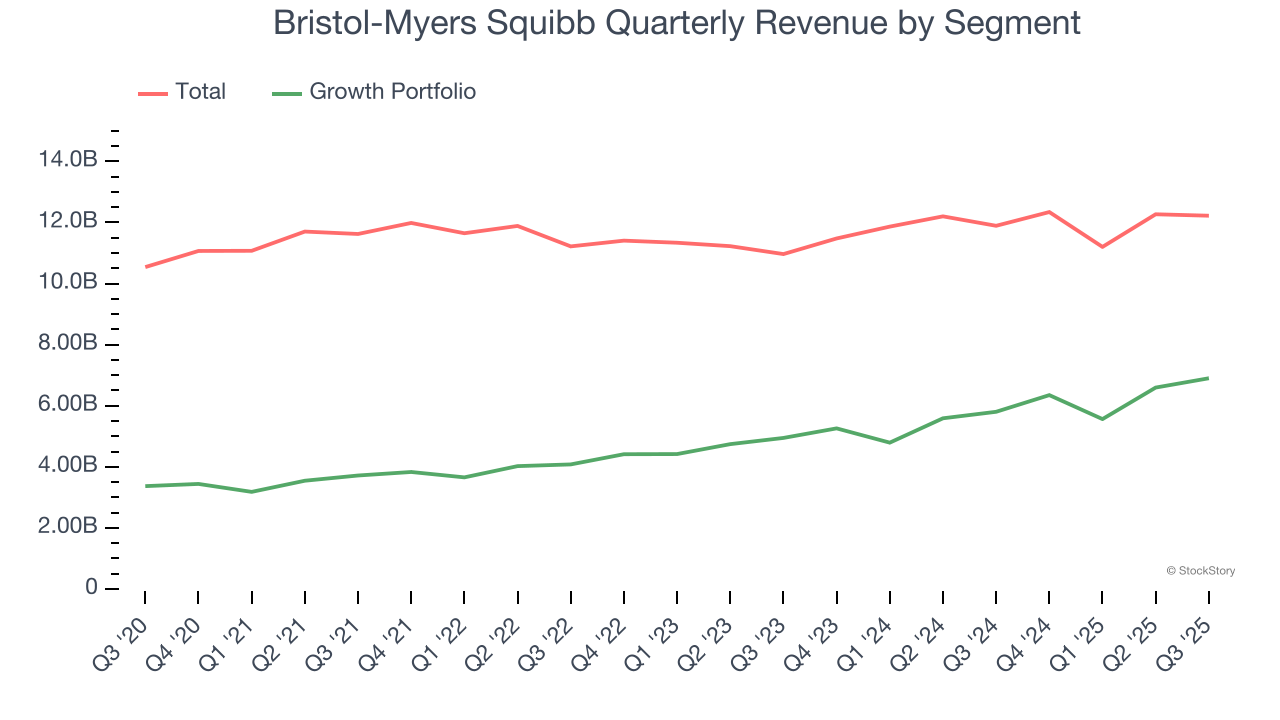
This quarter, Bristol-Myers Squibb reported modest year-on-year revenue growth of 2.8% but beat Wall Street’s estimates by 3.4%.
Looking ahead, sell-side analysts expect revenue to decline by 6.9% over the next 12 months, a deceleration versus the last two years. This projection doesn't excite us and suggests its products and services will see some demand headwinds.
Software is eating the world and there is virtually no industry left that has been untouched by it. That drives increasing demand for tools helping software developers do their jobs, whether it be monitoring critical cloud infrastructure, integrating audio and video functionality, or ensuring smooth content streaming. Click here to access a free report on our 3 favorite stocks to play this generational megatrend.
Operating Margin
Operating margin is an important measure of profitability as it shows the portion of revenue left after accounting for all core expenses – everything from the cost of goods sold to advertising and wages. It’s also useful for comparing profitability across companies with different levels of debt and tax rates because it excludes interest and taxes.
Bristol-Myers Squibb has done a decent job managing its cost base over the last five years. The company has produced an average operating margin of 10%, higher than the broader healthcare sector.
Analyzing the trend in its profitability, Bristol-Myers Squibb’s operating margin rose by 9.7 percentage points over the last five years, as its sales growth gave it operating leverage. Zooming in on its more recent performance, we can see the company’s trajectory is intact as its margin has also increased by 2.1 percentage points on a two-year basis.
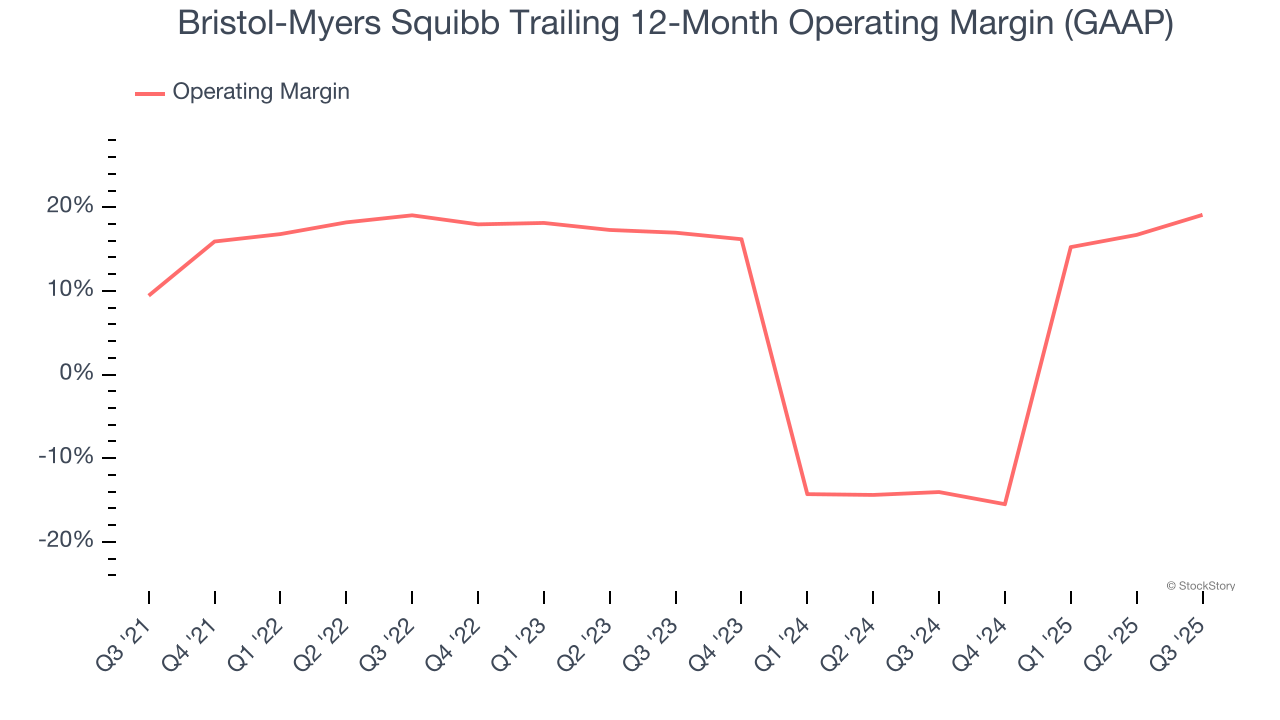
This quarter, Bristol-Myers Squibb generated an operating margin profit margin of 25.5%, up 9.4 percentage points year on year. This increase was a welcome development and shows it was more efficient.
Earnings Per Share
Revenue trends explain a company’s historical growth, but the long-term change in earnings per share (EPS) points to the profitability of that growth – for example, a company could inflate its sales through excessive spending on advertising and promotions.
Bristol-Myers Squibb’s EPS grew at an unimpressive 1.1% compounded annual growth rate over the last five years, lower than its 4% annualized revenue growth. We can see the difference stemmed from higher interest expenses or taxes as the company actually improved its operating margin and repurchased its shares during this time.
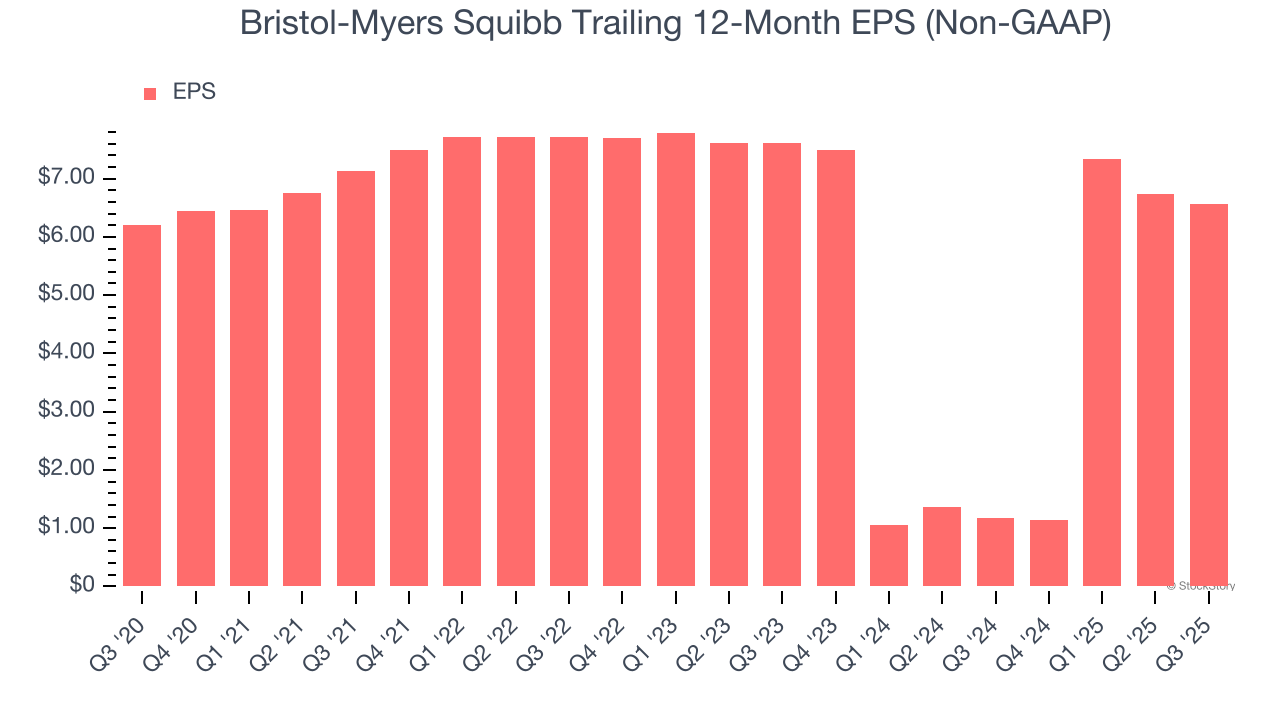
In Q3, Bristol-Myers Squibb reported adjusted EPS of $1.63, down from $1.80 in the same quarter last year. Despite falling year on year, this print beat analysts’ estimates by 7.6%. Over the next 12 months, Wall Street expects Bristol-Myers Squibb’s full-year EPS of $6.56 to shrink by 4.7%.
Key Takeaways from Bristol-Myers Squibb’s Q3 Results
We enjoyed seeing Bristol-Myers Squibb beat analysts’ revenue expectations this quarter. We were also happy its full-year EPS guidance outperformed Wall Street’s estimates. Overall, we think this was a solid quarter with some key areas of upside. The stock remained flat at $43 immediately following the results.
Bristol-Myers Squibb had an encouraging quarter, but one earnings result doesn’t necessarily make the stock a buy. Let’s see if this is a good investment. The latest quarter does matter, but not nearly as much as longer-term fundamentals and valuation, when deciding if the stock is a buy. We cover that in our actionable full research report which you can read here, it’s free for active Edge members.
